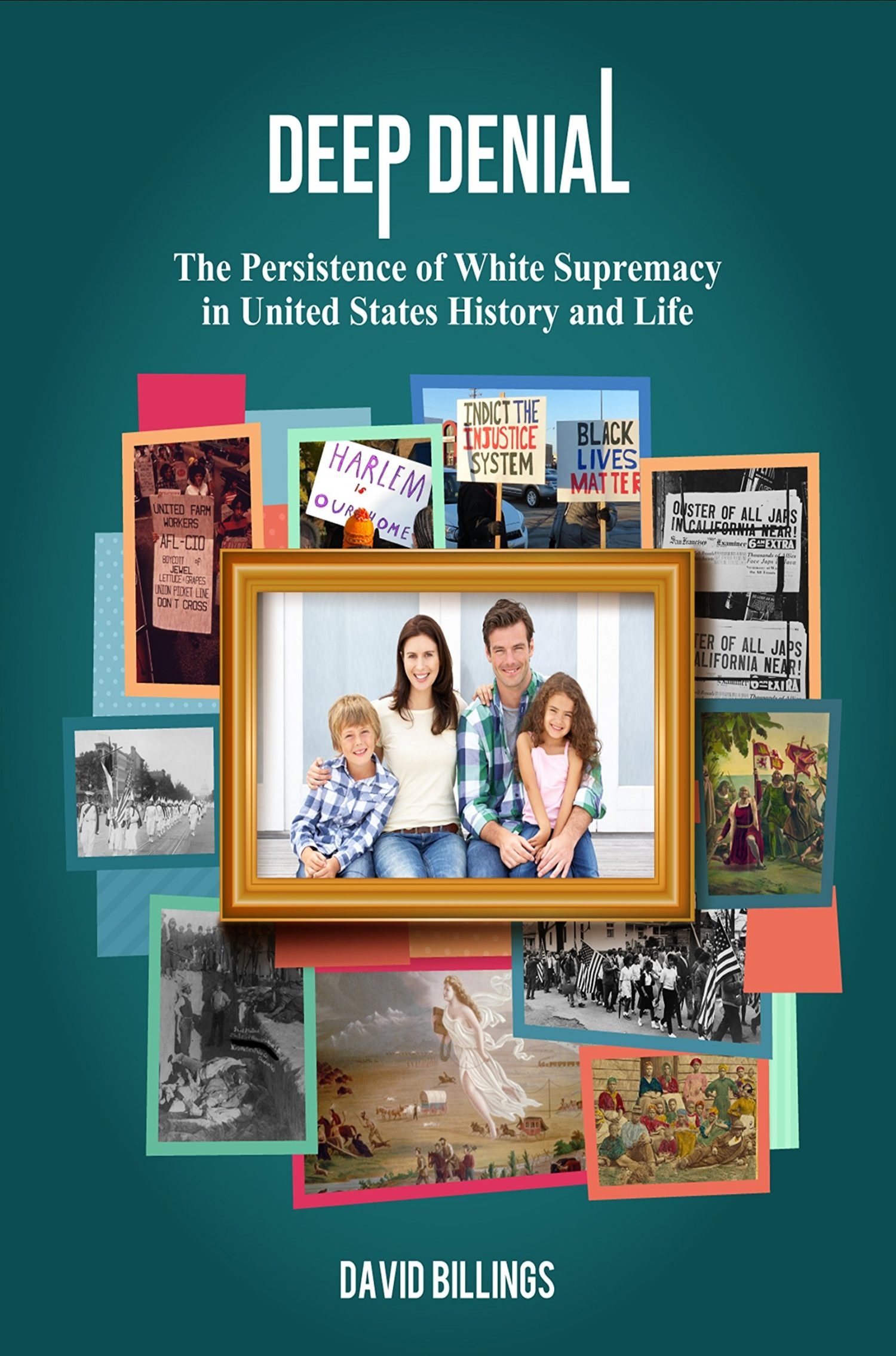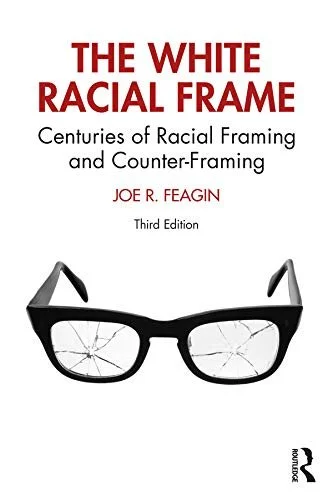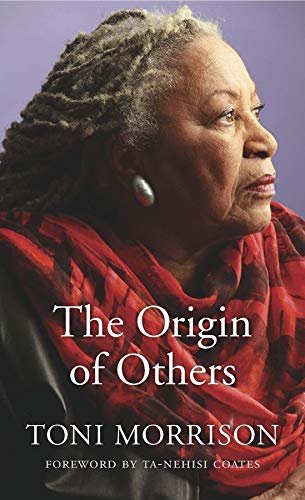(White) students are innocent
Before Border Crossers facilitated workshops for teachers to learn how to talk about race with students, their mission was to create partnerships between public and private schools located in the same neighborhood. Since these partnerships were to be built through the shared language of science, my classroom was paired with a science classroom at the public school across the street. Students were asked to research environmentally-friendly city initiatives -- e.g., the installation of bike and bus lanes -- and then apply what they learned as they “reimagined” our block.
In preparation for meeting with “our partners” across the street, I asked my class to share some of the ways we could reimagine our block. When it was Christopher’s turn to share he pointed out the window and said matter-of-factly, “We should just bulldoze those buildings and create a park.” I was stunned. I reflexively tried to appeal to his sense of moral fairness: “Those buildings are not abandoned brick buildings; families live there. If we bulldozed their homes, where would they live?” His response was quick and dismissive, “It’s public housing. We paid for those buildings to be built. We can just move those people somewhere else.” I was horrified. I tried to shame him: “Imagine how embarrassed you’ll be when you suggest this idea to the class across the street and one of the students tells you that’s where their family lives.” Christopher was unmoved and now incredulous: “We paid for those buildings. We own those buildings. We can knock them down if we want.”
Although I don’t remember exactly how this interaction ended, I likely advised Christopher to leave the classroom and suggested he “share his idea” with the principal. I also remember having to follow up with the principal after school, which is when I found out there would be no consequence for Christopher’s transgression: “Christopher and I talked it through and he has agreed to put this behind him and not mention it again.” Now I was the one who was incredulous: “That’s it?! HE’S going to put this behind HIM?!” I remember her response was quick and definitive: “Yes.”
Christopher’s disregard for my cues to perform the role of “good white person” left me both angry and frustrated: How could this be? How could the school allow him to get away with this? Someone has to take care of this. This was not my responsibility. I was Christopher’s science teacher. His parents probably couldn’t help. He probably learned these values from them at home. This is not okay. My inability to make sense of what happened stemmed from my ahistorical and decontextualized conceptualization of my exchange with Christopher, as well as my exchange with the principal, and the rules of whiteness (Leonardo, 2009; DiAngelo, 2018).
Scholars have demonstrated white people have been socialized to think of themselves as deserving of the advantages they have in life (Bonilla-Silva, 2018; Oluo, 2018). As Billings (2016) explains:
Our defenses as white people, when confronted about our white privileges, have been honed sharply over the centuries. What we can’t outright deny, we are well-equipped to justify in a minute. “We” -- meaning white people though never stated as such -- really don’t think people of color work as hard as we do. Most of us believe that white people earned all we have with no assistance from the federal government. (p.9)
As I understood it at the time, “good” white people are categorically different than white people who are racist bigots because we care about and for other people who we see as less fortunate. Although I know better now, what I did next was a whole lot of #whitenonsense: I called a few friends who worked for the city in an attempt to learn more about who “owns” public housing and the laws I figured must be in place to protect the tenants who live in the buildings behind our school. My plan was to present this as “objective” evidence to Christopher as a way to prove to him why we cannot “just bulldoze those buildings.” I know. #hotmess #whiteprivilege #stilldyslexic
As one might have predicted based on my strategy, my effort quickly stalled out and was eclipsed by #life. It would be seven years before I began to grasp how the racist and violent history of public housing in the United States is part of what Hill (2017) refers to as “America’s War on the Vulnerable.” H/t Dr. Vivian Gadsden for the book recommendation. All this to say, I now see the way I tried to make sense of Christopher’s behavior as undergirded by the following problematic and unproductive assumptions:
Christopher was unaware that his suggestion was “racially insensitive.” Because he was unaware, his transgression was unintentional and likely a reflection of his privileged home life/parents’ values.
Christopher was unaware of race and racism. He was not racist. He was ignorant, and therefore innocent.
The other kids in the classroom did not think things like this. Christopher was an exception. Once Christopher left the classroom, the other kids did not wonder about our interaction and/or my lack of follow through.
The vast majority of white people socialized in the United States understand racism as an intentional and overt act of racial discrimination performed by a racist bigot (Anderson, 2016). As a result, our default is to presume the innocence of other white individuals who we believe are categorically different than “bad whites” rather than the manifestation of generations of institutionalized white supremacy and systemic oppression (Bell, 1993; Applebaum, 2011; Rothstein, 2017). Many of the participant responses suggest their “sense making” was informed by how they/we have been socialized as white people in the United States (Bonilla-Silva, 2018). Consider the following:
There’s the occasional ninth grade kid who says something that he probably shouldn’t say or she, but it’s not out of malice-- [pause] It’s out of ignorance, lack of exposure, naivete, what that-- it is. And I deal with that in the classroom, but it’s not malicious. And it happens rarely, but it does. (Robert 20:56, Phase One Interview, 06/11/18)
This response is discursively similar to a response from Alex discussed earlier: “I haven’t seen stuff that has struck me as intentionally racially insensitive” (Alex 16:58, Phase One Interview, 05/30/18). Like Alex, the language Robert uses above positions him as both an objective observer and a judge of student behavior in his classroom. The declaration “it’s not out of malice” and the explanation that “it’s out of ignorance, lack of exposure, naivete” suggest Robert -- like Alex -- is confident in his ability to judge the intention of the transgressor. Robert’s assertion “I deal with that in the classroom” suggests he is confident in his ability to help well-intentioned students recognize their transgressions -- that is, saying “something” they “probably shouldn’t say.” Although Robert did not elaborate on how he deals with it, other participants described what they thought teachers should do. For example, consider this response from Benjamin:
I think, of course, if your teacher sees an instance of racial bias to address that immediately and thoughtfully as a way of trying to dismantle that structure. If there’s something expressed that’s racially insensitive, not necessarily going after that student in an aggressive manner but trying to really understand-- understand where the student is coming from and then actively dismantling would be one thing. (Emphasis added, Benjamin 11:12, Phase One Interview, 05/31/18)
This is consistent with what I was trying to do with Christopher: “Not necessarily going after that student in an aggressive manner.” I didn’t want to appear to be “attacking” Christopher about something I understood as unintentionally racially insensitive. Although it could be argued that I did not try to “really understand” Christopher, his understanding of the situation seemed clear to me: He felt we were entitled to do whatever we saw fit with public housing, including relocating the residents and demolishing their homes. When I reflect on Benjamin’s assertion that teachers should try to “understand where the student is coming from,” I retrospectively see Christopher was “coming from” the same place I came from -- that is, from “Dear White America” (Yancy, 2015). #WhiteAmerica #Eminem
Benjamin’s use of the word “if” to frame his response above is discursively similar to the responses from other participants. For example, Robert’s concession that “it happens rarely, but it does” (Robert 20:56, Phase One Interview, 06/11/18). This discursive framing is consistent with the way white people understand the frequency of racist transgressions (Bonilla-Silva, 2018). Like my assumption about the other students who observed my exchange with Christopher, Benjamin’s response suggests the vast majority of our (white) students are innocent. This discursive framing is consistent with the way other participants downplayed the problematic behaviors as a misunderstanding or disconnect between the student and their teacher. In other words, we (white people) understand these “incidents” to be isolated manifestations of the naivete of innocent (white) students rather than part of a larger pattern of unchecked #whitenonsense in a country founded on an ideology of white supremacy (Bell, 1993; Baldwin, 1993; Anderson, 2016).
Other participants spoke explicitly to an apparent disconnect between our white students and people of Color, in general. The following excerpt from a Phase One Interview was included in the Phase Two Booklet under the heading, Whiteness manifests as Othering:
There seems to be sort of a disconnect with some of the students I see, predominantly White students, with their interactions with the students of Color. There seems to be a real lack of understanding around a person of Color’s experience. There seems to be a real lack of awareness around appropriateness, and I sometimes see an amusement around-- “Hey, look at these people. They’re kind of funny. I’m not taking them seriously, but they’re kind of funny. Look at this. And I’m actually getting some kind of entertainment from them.” And I don’t think they-- again, I don’t think it’s a very conscious thing, but I think it has to do with their upbringing and seeing folks of Color only in certain roles. When someone’s not in that role, it’s something that [they’re] not sure what to make of it, and often the response is sort of amusement and, “Oh, look at this,” which is troubling obviously, very troubling. (Participant F, Phase Two Booklet, p.7)
While this participant explicitly states they find the behavior of these particular students “very troubling,” their response is consistent with responses from almost all of the other participants. For example, this participant’s response frames this behavior as manifesting from “a real lack of understanding around a person of Color’s experience.” The suggestion the racially insensitive jokes are a product of a lack of awareness that “has to do with their upbringing” is similar to my own assumption about Christopher’s upbringing being the primary reason Christopher did not know how to “appropriately” talk about public housing.
The presumed innocence of white people by white people has been well documented in the literature (Tochluk, 2010; Feagin, 2013). This discursive understanding can also be seen when this participant shared how she feels when her class is made up of all white students:
So that’s just awful. It’s just awful in the room. It’s awful in the room because it puts-- I think there’s first, the strangeness of when you’re reading a novel like Beloved with a group of all White kids. And there’s a “they” thing that happens. Like, “We’re all on this White team and we don’t know how it goes for those people. (Participant J, Phase Two Booklet, p.6)
This response suggests the reason “it’s just awful in the room” is because white students lack the knowledge and awareness of the violent history of white supremacy and white rage in the United States of America (Anderson, 2016). The language of this response -- “there’s a ‘they’ thing that happens” -- suggests the “strangeness” in the room results from teaching (white) students who have been able to retain their innocence in the face of state-sanctioned oppression because they (and their social circles) are unreflective or naive about generational violence of the system (Morrison, 1992; Morrison, 2017).





